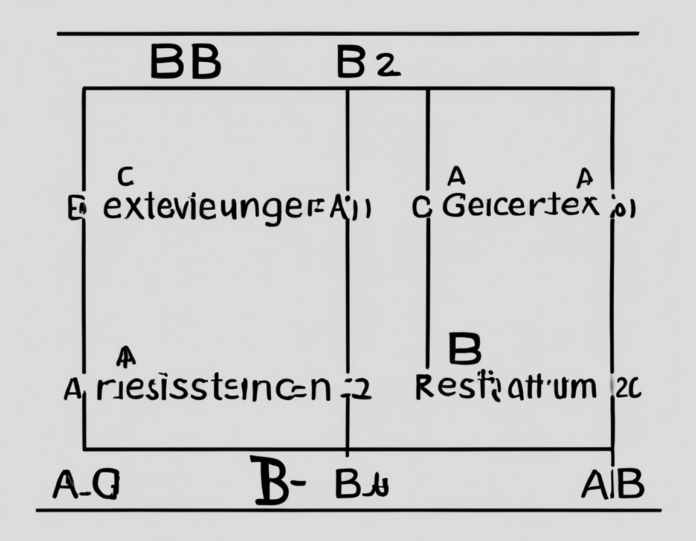Introduction
In the world of electronics and electrical engineering, understanding resistance and how it affects the behavior of circuits is paramount. When analyzing complex circuits, it is often necessary to calculate the equivalent resistance between two points. This value represents the combined resistance seen from the perspective of those two points in the circuit. In this article, we will delve into the concept of equivalent resistance and explore methods to calculate it efficiently.
Understanding Resistance in Circuits
In an electrical circuit, resistance is the property that hinders the flow of current. It is measured in ohms (Ω) and can be influenced by factors such as the material of the conductor, its length, its cross-sectional area, and temperature. Resistors are components specifically designed to introduce a desired amount of resistance into a circuit.
Series and Parallel Connections
Before we dive into calculating equivalent resistance, it’s important to understand the two primary ways in which resistors can be connected in a circuit: series and parallel.
-
Series Connection: When resistors are connected end-to-end so that the same current flows through each of them, they are said to be in series. In a series connection, the total resistance is simply the sum of the individual resistances.
-
Parallel Connection: Resistors are in parallel when they are connected across the same two points, providing alternative paths for current to flow. In a parallel connection, the reciprocal of the total resistance is equal to the sum of the reciprocals of the individual resistances.
Equivalent Resistance in Series Circuits
In a series circuit, the equivalent resistance is the sum of the individual resistances. For resistors R1, R2, and R3 connected in series, the equivalent resistance (R_s) can be calculated using the formula:
[R_s = R1 + R2 + R3]
For a series connection with more than three resistors, you would continue adding the individual resistances to find the total.
Equivalent Resistance in Parallel Circuits
Calculating the equivalent resistance in a parallel circuit is slightly more complex. For resistors R1, R2, and R3 connected in parallel, the formula for the reciprocal of the equivalent resistance (1/R_p) is:
[ \frac{1}{R_p} = \frac{1}{R1} + \frac{1}{R2} + \frac{1}{R3} ]
To find the equivalent resistance, you would take the reciprocal of the sum obtained from the above formula:
[ R_p = \frac{1}{ \left( \frac{1}{R1} + \frac{1}{R2} + \frac{1}{R3} \right) } ]
Combination Circuits
Real-world circuits are rarely purely series or parallel; they usually consist of a combination of both. When faced with a combination circuit, the key is to simplify it by breaking it down into smaller series and parallel components. By iteratively reducing the circuit using these concepts, you can eventually calculate the equivalent resistance between any two points.
Strategies for Calculating Equivalent Resistance
-
Identify Series and Parallel Sections: Look for parts of the circuit that are clearly in series or parallel. Simplify these sections individually before tackling the circuit as a whole.
-
Simplify Step by Step: Break down the circuit into smaller, manageable parts by combining resistances in series and parallel until you reach a single equivalent resistance.
-
Use Reciprocals for Parallel Resistors: Remember that in parallel connections, reciprocals of resistance values add up. Utilize this property to simplify calculations.
-
Consider Multiple Paths: In complex circuits, it is possible for current to flow through different paths to reach the same point. Take all possible paths into account when calculating equivalent resistance.
FAQs
- Can the equivalent resistance of a circuit be lower than that of any individual resistor?
-
Yes, in some cases, the equivalent resistance of a combination circuit can be lower than the resistance of any individual resistor due to the parallel connections.
-
What happens to current and voltage in a series circuit?
-
In a series circuit, the current remains the same throughout, while the voltage is divided among the resistors based on their values.
-
Is there a limit to the number of resistors that can be connected in series or parallel?
-
There is no theoretical limit to the number of resistors that can be connected in series or parallel; however, practical constraints such as physical space and circuit complexity should be considered.
-
How does temperature affect resistance in a circuit?
-
In general, the resistance of a conductor increases with temperature due to increased electron collisions. This phenomenon is utilized in devices like thermistors.
-
Do non-linear elements like diodes affect equivalent resistance calculations?
- Non-linear elements such as diodes do not follow Ohm’s Law and can significantly alter the behavior of a circuit. Specialized analysis techniques are required for circuits containing such elements.
In conclusion, understanding how to calculate the equivalent resistance in electronic circuits is a fundamental skill for engineers and enthusiasts alike. By grasping the principles of series and parallel connections, and employing systematic strategies to simplify complex circuits, you can effectively analyze and design circuitry for a wide range of applications. Mastering the art of equivalent resistance calculations opens the door to exploring more intricate circuit designs and honing your electrical engineering capabilities.


